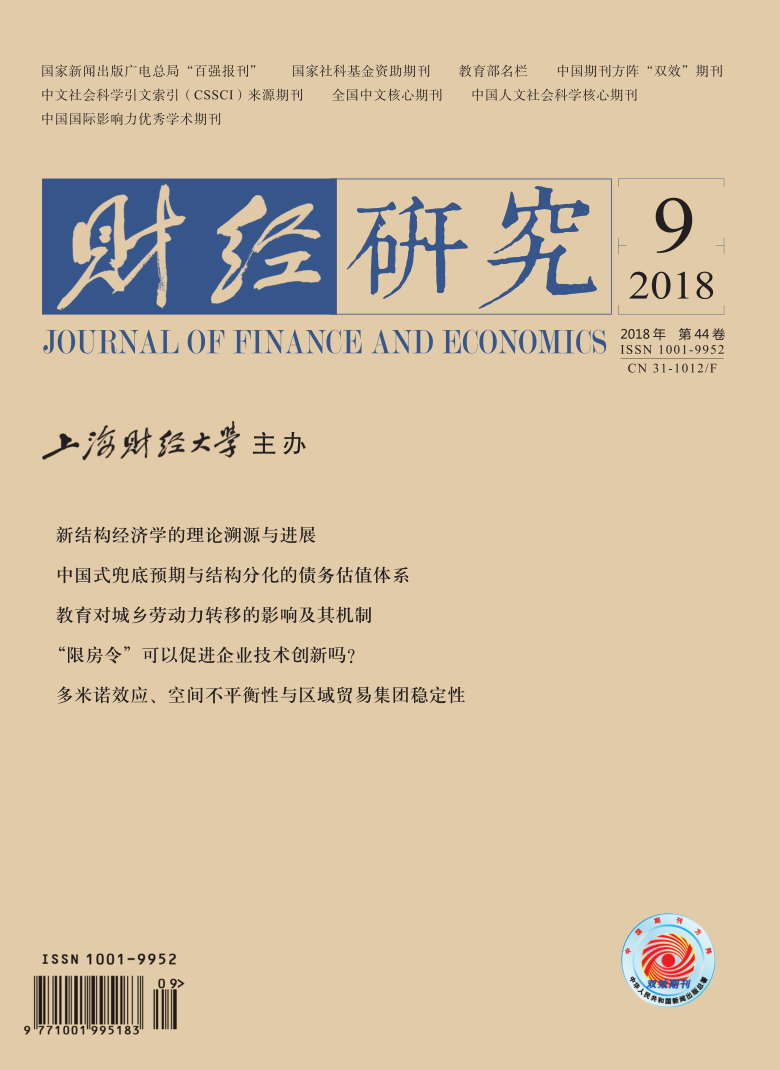The rural-urban migration is a key factor in shaping the development of China’s great growth. Recently China has been facing the slowing down of growth of labor force from rural areas, so how to promote the labor rural-urban migration is a new challenge for China. This paper discusses the external effect of rural local education on the migration of rural labors and its mechanisms, and uses the local average education as the proxy of the external effect of education. In fact, we think that the external effect of rural local education has two opposite directions on the rural-urban migration. On the one hand, entrepreneurship is more active in regions with higher education. It implies that the community-level education can promote the development of local business, which will increase the availability of local non-agricultural jobs. Therefore, the local effects of education on the rural-urban migration could be negative, especially in regions with vigorous local business. On the other hand, individuals with higher education in a network usually have more resources, such as higher incomes to provide temporary accommodations and lending or higher abilities of collecting job information. Therefore, we can expect a positive effect of average education on the migration for regions with stronger local migrant networks. With the data from the China Household Income Project Survey (CHIP2002 & CHIP2013), the empirical findings support our hypothesis. We find that the local education endowment indeed has two opposite roles in the migration. First, the increase of local education endowment can promote the development of local enterprises, which will hinder the rural-urban migration. However, the increase of local education can strengthen the positive effect of the migrant’s networks on the migration, so the aggregate effect of local community education on the migration will depend on the development of local development of enterprises and the migrant’s networks. Finally, our results are robust with the support of the instrumental variable method. The policy implications are apparent. For areas with potential to develop the local non-farm economy, local governments should import more investment by strengthening local education; while for other rural areas, cultivating local migrant social networks can enhance the role of local education in promoting the migration.
 / Journals / Journal of Finance and Economics
/ Journals / Journal of Finance and EconomicsJournal of Finance and Economics
LiuYuanchun, Editor-in-Chief
ZhengChunrong, Vice Executive Editor-in-Chief
YaoLan BaoXiaohua HuangJun, Vice Editor-in-Chief
The Effect of Education on the Rural-Urban Migration and Its Mechanisms
Journal of Finance and Economics Vol. 44, Issue 09, pp. 66 - 79 (2018) DOI:10.16538/j.cnki.jfe.2018.09.004
Summary
References
Summary
[1] Li S, Luo C. Re- estimating the Income gap between urban and rural households in China[J]. Journal of Peking University( Philosophy and Social Sciences), 2007,(2):111-120.(In Chinese)
[2] Zhao Y. Labor mobility and the role of education in rural China--evidence based on Sichuan province.[J].Economic Research Journal, 1997,(2): 37–42. (In Chinese)
[3] Brandt L, Zhu X D. Accounting for China's growth[R]. IZA DP No. 4764, 2010.
[4] Chen Q, Song Z. Accounting for China’s urbanization[J]. China Economic Review, 2014, 30: 485–494.
[5] Doms M, Lewis E, Robb A. Local labor force education, new business characteristics, and firm performance[J]. Journal of Urban Economics, 2010, 67(1): 61–77. DOI:10.1016/j.jue.2009.10.002
[6] Harris J R, Todaro M P. Migration, unemployment and development: A two-sector analysis[J]. The American Economic Review, 1970, 60(1): 126–142.
[7] Huang Y P. A labor shortage in China[N]. Wall Street Journal, 2004-08-06(A7).
[8] Knight D, Deng Q H, Li S. The puzzle of migrant labour shortage and rural labour surplus in China[J]. China Economic Review, 2011, 22(4): 585–600.
[9] Lewis W A. Economic development with unlimited supplies of labour[J]. The Manchester School, 1954, 22(2): 139–191.
[10] Liu Z Q. Human capital externalities and rural-urban migration: Evidence from rural China[J]. China Economic Review, 2008, 19(3): 521–535.
[11] Poot J. Information, communication and networks in international migration systems[J]. The Annals of Regional Science, 1996, 30(1): 55–73.
[12] Stalker P. The work of strangers: A survey of international labour migration[M]. Geneva: International Labour Organization, 1994.
[13] Todaro M P. A model of labor migration and urban unemployment in less developed countries[J]. The American Economic Review, 1969, 59(1): 138–148.
[14] Yao Y, Zhang K. Has China passed the Lewis turning point? A structural estimation based on provincial data[J]. China Economic Journal, 2010, 3(2): 155–162.
[15] Zhao Y H. Labor migration and returns to rural education in China[J]. American Journal of Agricultural Economics, 1997, 79(4): 1278–1287.
[16] Zhao Y H. Leaving the countryside: Rural-to-urban migration decisions in China[J]. American Economic Review, 1999, 89(2): 281–286.
[17] Zhao Y H. The role of migrant networks in labor migration: The case of China[J]. Contemporary Economic Policy, 2003, 21(4): 500–511.
Cite this article
Tan Huaqing, Zhou Yi, Zhao Bo, et al. The Effect of Education on the Rural-Urban Migration and Its Mechanisms[J]. Journal of Finance and Economics, 2018, 44(9): 66-79.
Export Citations as:
For
ISSUE COVER
RELATED ARTICLES




 6511
6511  6595
6595

